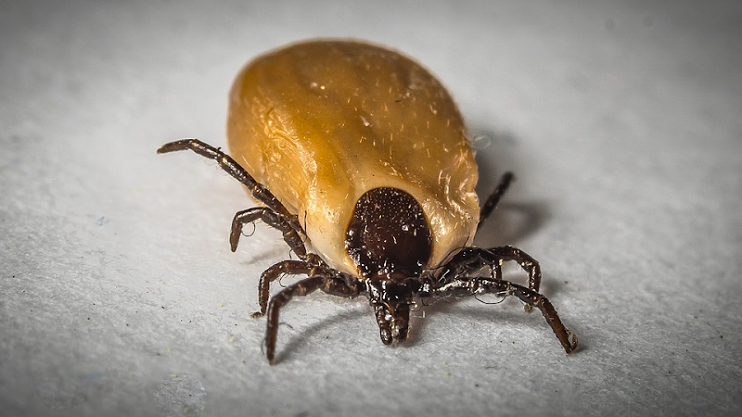
Ticks are becoming more and more prevalent in the summer months, as the weather gets warmer and damper, drawing the ticks out of their ground or tree-based burrows. Because of ticks becoming a more common occurrence, it is important that you check your dog regularly – that is, every time they come inside the house from a grassy or wooded area – for the presence of a tick, or multiple ticks. Left undetected, ticks carry and can spread Lyme disease to your pet.
- How do ticks attach themselves?
Ticks are burrowing creatures. If one finds its way onto your dog’s fur, it’ll eventually find its way into your dog’s skin. They burrow using small hooks”, almost crab-like appendages. These hooks attach and wriggle their way into the dog’s skin, after which, the tick feeds on the blood of your dog until it is full – after which it will fall off.
- What to do if you find a tick on your dog?
Let’s say that Lassie has just come home from frolicking in the meadows all day and is being dutifully inspected for ticks. Unfortunately, you’ve found one lurking in her skin. First step is not to panic, do not try to remove it with your fingers. When ticks are threatened, they burrow deeper. You’ll want to go and buy, or locate if you have one, a tick removal kit.
You must grasp as close to the head of the tick as you can, and pull straight up – rather than twisting and turning. After you remove the tick, The Vets advise to clean the area with a small amount of rubbing alcohol and soak the live tick in a Ziploc bag with alcohol in it. You can dispose of the tick, but you can also bring it to your veterinarian for testing, when you bring your dog in.
- Go to the vets
Your next step after tick removal must be to visit the vets office. This will allow them to test your dog for the presence of Lyme disease, and they may want to follow up with you over the course of several weeks to determine if Lyme is still not present in the bloodstream. They may also test the tick for Lyme disease.
- What other tick-borne illnesses can your dog contract?
Though they are most famous for carrying Lyme disease, ticks don’t just carry Lyme. They carry as many as sixteen other tick-borne illnesses. Some will affect your pet, some will not. Among the most common of these is tick-borne encephalitis or TBE. TBE exhibits strange symptoms in dogs, but they aren’t easy to spot.
In general, if you notice your dog becoming more lethargic, having difficulty walking due to inflammation of joints, feverish and a loss of appetite, then your dog may have the symptoms of Lyme disease, or another tick-borne illness and it is imperative that you get your dog to the vets ASAP.
- How to prevent tick bites
One of the best ways to prevent tick bites on your dog is to make sure that they are well-groomed. You can groom your dog yourself, taking a dog-grooming course before you start. Or, even basic grooming will help your dog to avoid ticks by making sure that the tick has less fur to cling to.
If your dog spends a lot of time in the garden, make sure that the lawn is cut short, this will play a role in preventing the spread of ticks, by giving them few places to hide – in general – ticks enjoy damp, wet, long-grassy areas. Another option is to buy your dog a tick collar, which emits noises at frequencies that deter ticks from biting. This may not save your dog, but it is a deterrent nonetheless and can be useful if your dog is walking in wetter areas like woodland.
In general, ticks are a part of our ecosystem and therefore a part of life for pet-owners (and everyone else) and learning to live with ticks and learning how to remove them from your dog is a skill that may save you panicking when you find one of the little buggers latched on. Keep your dog well-groomed, buy a tick collar, and make sure that you bring your dog to the vets if you suspect a tick bite.
Most importantly, make sure you have effective pet insurance. To receive a free quote, click here. You can currently get up to a 10% discount available if you purchase the pet insurance plan from this site.
Check out the Best Pet Insurance that will suit you and your Pet at https://www.theinsuredpet.com/insurance-review

















